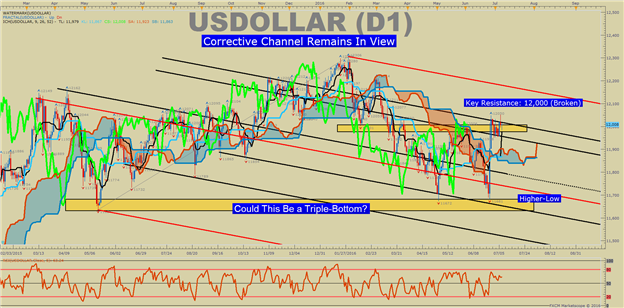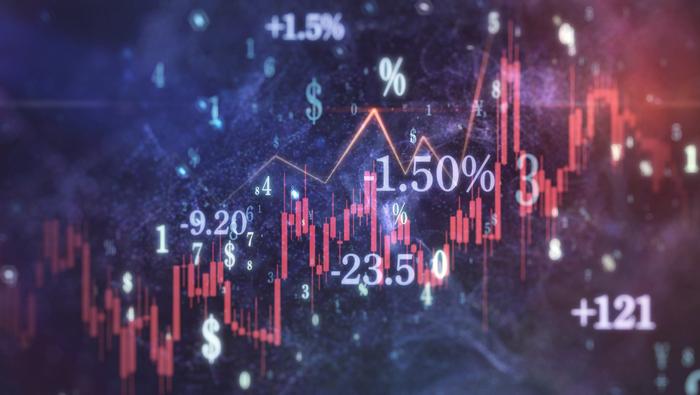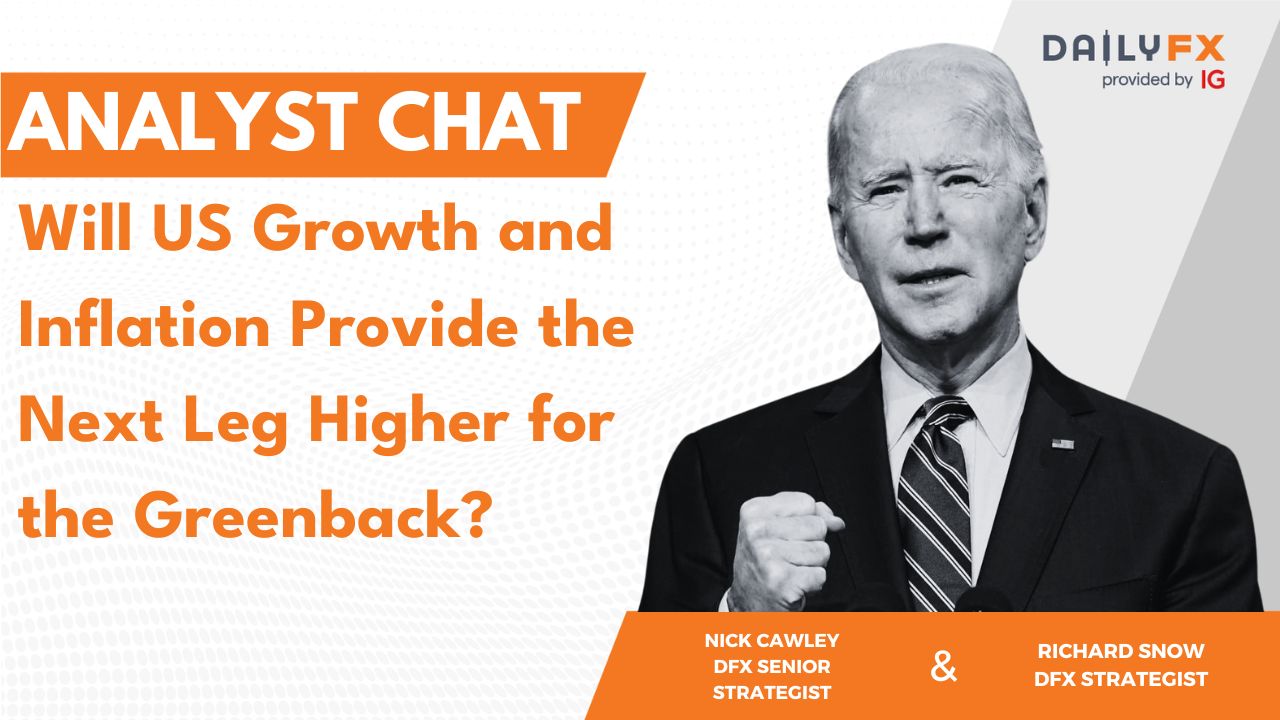To See How Live Clients Are Positioned In FX & Equities Click Here Now
Talking Points:
- US Dollar Technical Strategy: Beware the H2 2016 Macro Opening Range
- Aggressive Break Above 12,000 Favors a Resumption of the Pain Trade
- Could Sentiment Hold US Dollar Back?
Opening ranges are messy. Especially macro opening ranges in critical markets like G4 currencies, equities, and commodities. Opening ranges often create wild swings in markets as institutions fight for new positions that will ideally make their books look great at the end of the quarter or year.
The volatility is often amplified when as traders on the wrong side of the move bail and/ or flip positioning. This causes the new trend to “breakout.” However, you should be aware of volatility in the first few weeks of H1 or H2, as they are famous for whipsaws. It is possible thought that you could be part of a trend that continues from the start of the half of the year.
The Macro Opening Range is treated as the first two weeks of January and July. The extremes or high and low of those markets are often seen as the trigger points for the breakout or breakdown.
There is a lot of uncertainty in the counterparts of the US Dollar, which could boost the value of the US Dollar. For example, the Australian Dollar has significant exposure to China. The British Pound is dealing with post-Brexit uncertainties. The Japanese Yen appears to be dealing with the first failed QQE program coming to realization post-GFC. Lastly, the Euro is being faced with the fear of contagion where other countries may look to the separatist ways of the U.K.
In other words, while the US Dollar has traded sideways since the Monday after the Brexit outcome of the EU Referendum we could still see the real post-Brexit rally soon get underway.
The Fundamentals And Technical Picture May Be Aligning to US Dollar Strength

Given the technical picture on the charts, we are now seeing fault lines before the ceiling breaks on US Dollar. Currently, we have resistance at 12,050/53 (post-Brexit high). A breakout is expected at the H2 Opening range and below, we will share some the building blocks of a US dollar breakout as well as what levels to watch, and what other markets could complement such a strong move.
The chart above shows Ichimoku applied as well as a bearish Andrew’s Pitchfork Channel (Red). One of the key signs of a trend shift is when the momentum line (bright green) moves on either side of the cloud and joins price. When the combination of momentum and price on either side of the cloud show up, we have the foundation of a strong trend. A move above the 12,050/53 on a closing basis may, in fact, be the first real sign that the “pain trade” that has been on pause since January could soon resume.
We have long discussed the importance of the 12,000 level on the chart, and the recent break of this level off of the price range of the May 2015 low suggests the potential triple bottom price action pattern. If this pattern is playing out, we would expect an equal move the size of the range above the recent 2016 high of 12,306.
The Bearish channel (red) has done a fine job of framing price action. When combining the bearish price channel with the 200-Day Moving Average (12,023), you can begin to see that we are still in a corrective price channel in the setback may soon occur, but overall the strength of the move and resistance should favor the Bulls.
In addition, sentiment in aggregate is showing retail is bullish US Dollar at a ratio of 1.2323 bulls for every one bear or seller. We use our SSI as a contrarian indicator to price action, and the fact that the majority of traders are long gives a signal that the US DOLLAR may continue higher.
Support & Resistance Levels As of July 7, 2016
We’ve warned that even a dire fundamental picture in the US regarding expected interest rate hikes (a fundamental driver of currency strength) could be swept aside with a break above the 12,000 zone. Now that this has happened, attention should be focused on further US Dollar upside.
Now, it is worth watching the macro opening range of July, which is the opening range for the second half of 2016 to see if dollar strength extends. If so, we could be looking at market stresses similar to late 2008 and the uncomfortable ripple effects to follow. Only this time, most central banks have only a few bullets in the gun if any, which could bring up the dollar strength even more.
One thing to be on the lookout for are the implications of the announcement that former Chairman of the Federal Reserve, Ben Bernanke would be advising the Bank of Japan. He was a proponent of ‘Helicopter Money’ as a last resort if QE efforts and effects have reached their limit and the government is unwilling to create a fiscal policy to stimulate aggregate demand.
Such a move would likely bring a lot of volatility in the JPY as well as the entire global financial system if a new step is taken by the Bank of Japan to accelerate growth.
Shorter-Term US Dollar Technical Levels for Thursday, July 7, 2016
For those interested in shorter-term levels of focus than the ones above, these levels signal important potential pivot levels over the next 48-hours of trading.

Interested In our Analyst’s Longer-Term Dollar Outlook? Please sign up for our free dollar guide here.
T.Y.







